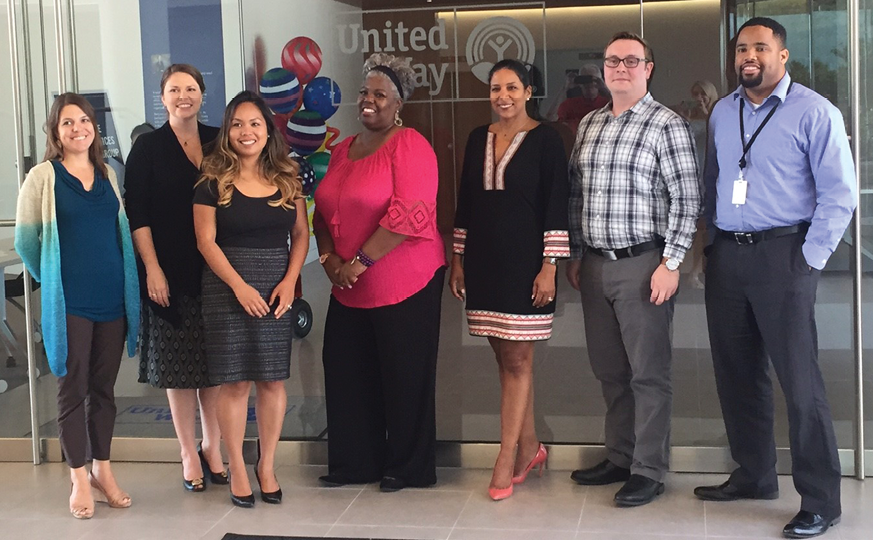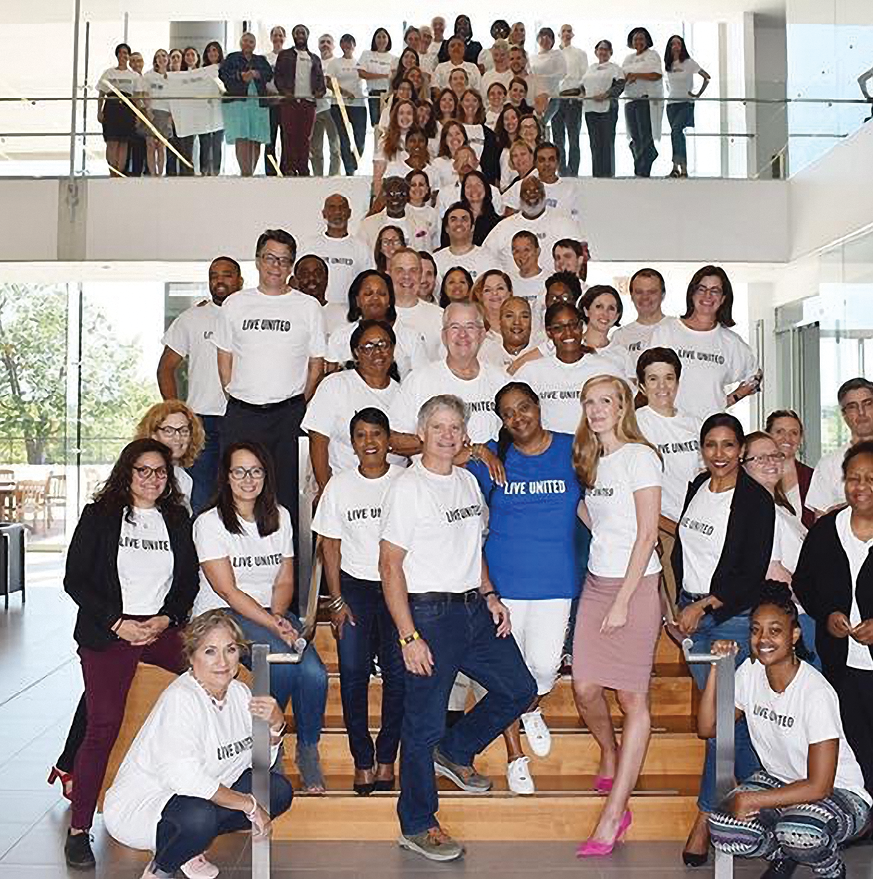- Home
- Media Kit
- Current Issue
- Past Issues
- Ad Specs-Submission
- Ad Print Settings
- Reprints (PDF)
- Photo Specifications (PDF)
- Contact Us

![]()
ONLINE

One Network
Editors’ Note
Lori Malcolm’s focus is to continue building a high-performing culture throughout the United Way network, which includes nearly 1,800 United Ways in more than 40 countries. Before joining United Way Worldwide, she led Recruitment Marketing and Diversity Recruiting at Walt Disney World; IT Recruitment and Organizational Effectiveness at Walmart; and served as the SVP of Human Resources and Talent at the franchised concept, Checkers and Rally’s Restaurants. Her approach builds upon a strong engineering background, including 10 years developing and selling technology solutions with IBM. She has served on numerous nonprofit boards and industry associations focused on her passion to help others live better, healthier lives. Malcolm earned a B.S. in operations research and industrial engineering from Cornell University.
Organization Brief
United Way’s (unitedway.org) mission is to improve lives by mobilizing the caring power of communities around the world to advance the common good. It seeks to serve as the problem-solver, the hand-raiser and the game-changer while fighting for the health, education and financial stability of every person in every community. It creates positive and permanent change by forging unlikely partnerships, finding new solutions to old problems, and mobilizing the best resources to solve the most challenging issues that communities face.

Lori Malcolm convened a cross-functional group of
United Way staff members to discuss the aspects
of a positive workplace
Will you highlight the history and heritage of United Way Worldwide and how United Way has evolved?
In 1887, a Denver woman, a priest, two ministers and a rabbi got together and recognized that they needed to work together to find new ways to make Denver a better place. They had a common desire to come together and create solutions for the Denver community, which led to the inception of United Way.
At its core, it has remained the same ever since, while United Way has also evolved as the needs of communities have changed. At that time, it was very hyper-local. We have now moved to the point where we have 1,800 local United Ways doing that very same thing, bringing together and mobilizing the caring power of communities to solve problems that people cannot solve all by themselves. That mission remains the same.
What has changed over time is that communities are no longer separate from each other. In a global world where people move from place to place, the realization becomes that we may have a need to make a difference and an impact not only in the community in which we currently live, but also in other communities around the world. As United Way moves forward, its goal is to create an environment where we operate as one network and people can make changes and have an impact all around the world.
United Way Worldwide’s
Diversity, Equity & Inclusion Statement of Principle
We take the broadest possible view of diversity. We value the visible and invisible qualities that make you who you are. We welcome that every person brings a unique perspective and experience to advance our mission and progress our fight for the health, education, and financial stability of every person in every community. We believe that each United Way community member, donor, volunteer, advocate, and employee must have equal access to solving community problems. We strive to include diversity, equity, and inclusion practices at the center of our daily work. We commit to using these practices for our business and our communities.
How do you focus your efforts and are the roles of Chief Culture and Operations Officer interrelated?
They are very interrelated; and as we think about the transformation I just mentioned with United Way moving from hyper-local to one where we work as an integrated network, that requires a significant shift in how people work together, set goals together and create capabilities together.
I came to United Way Worldwide three and a half years ago, which was about a year and a half into this new strategy where we’re focusing on operating as one network. Our CEO, Brian Gallagher, realized that the transformation was not moving as quickly as it needed to. The piece that was holding us up was our culture which needed to evolve from that hyper-local mindset to one of global growth. He brought me in as Culture Officer to help change that culture.
The way any organization builds a culture and sustains it is through key systems. Elements like how we operate, where we invest, what we measure, how we reward our people, and how we engage and train our leaders are some of the operating systems that drive culture. Our CEO has really seen a benefit in having a Chief Operating Officer who sees the importance of putting the two pieces together.

Lori Malcolm leading a United Way staff engagement activity.
Is it challenging to maintain culture with United Way’s growth and global footprint?
When I started here, the first thing I did was a culture audit to identify what elements of the various cultures across our organization were consistent. Our mission of improving lives and mobilizing the caring power of community is the same mission of every local United Way. At our core, we all saw our strength to be convening people, so those aspects of the culture were the same.
One key element of the transformation is that our donors now expect that their experience with United Way should be consistent no matter what city they happen to be in. If I’m a Tocqueville Society donor, which is one of our highest-level donors, and I live in Minneapolis and then I retire to Florida, in the past, our organization in Florida wouldn’t have known who I am. We’re moving toward an environment where we’ll share data and have one record for each donor so we’ll be able to provide an experience that is similar across all parts of United Way for that donor for their lifetime.
This changes the mindset of the culture because moving from a local perspective, where this is my donor and I keep all that data, to one network with a consistent experience for our donors, leads to a far more unified, global culture.
It was easy to have a common culture when we were very local, but now we’re trying to introduce the need to share into the culture. This unified, sharing mentality will also require the ability to come to a common set of decisions and for each of our units to operate in a similar way. We have to shift from hyper-local to an understanding that we’re all part of a single network.
How critical is it for United Way to build a diverse and inclusive culture?
Diversity, equity and inclusion are very important. We know that the work around diversity, equity and inclusion is unique to every United Way community around the world. However, we have, together with our local United Ways, created a statement around diversity, equity and inclusion and what it means for us. It outlines our broader commitment to building sustainable, inclusive and resilient organizations and communities.
We take the broadest possible view of diversity. We value the visible and invisible qualities that make you who you are and we welcome every person bringing their own unique perspective and experiences to bear in advancing our mission and our fight for health, education and financial stability for every person in every community.
We have created a statement that we all believe in and it is woven into everything that we do. We have also developed a blueprint for the modern United Way which outlines the way that we’re talking with locals about what United Way looks like in this modern, digital world.
That blueprint includes two cultural pieces that we put front and center. One is to have a growth mindset, and the second is to integrate and model diversity, equity, and inclusion in everything you do. We think it’s so important that we wanted to make certain that it was clearly spelled out in this blueprint of the modern United Way. Additionally, it prioritizes making certain that we create donor experiences that are excellent.
As we move to this modern United Way, it’s important for everybody to know that something like the Salesforce Philanthropy Cloud is just a channel and a way that we can reach our donors, but the whole goal is about doing more in practice. It’s allowing us, at the local level, to really focus in on making impact in our communities.![]()